World’s largest telescope will revolutionize the future of astronomy

How a telescope 100 times the size of Hubble is going to change everything.
“For my confirmation, I didn’t get a watch and my first pair of long pants, like most Lutheran boys. I got a telescope. My mother thought it would make the best gift.” –Wernher von Braun
Want to see deeper into the Universe than ever before. Build a bigger telescope. No matter what other tricks you use, there’s no substitute for size. The bigger your primary mirror is:
- the more light you gather,
- the better your resolution is,
- and more details can be seen, more distant and faster than under any other circumstances.
The problem is, there’s a size limit to how big you can build a single mirror and still have it be shaped correctly. Until we start manufacturing mirrors in zero-gravity, we’ve had two options: cast a single mirror up to the maximum size you can manufacture it — around 8 meters — or build a large number of smaller segments and stitch them together.
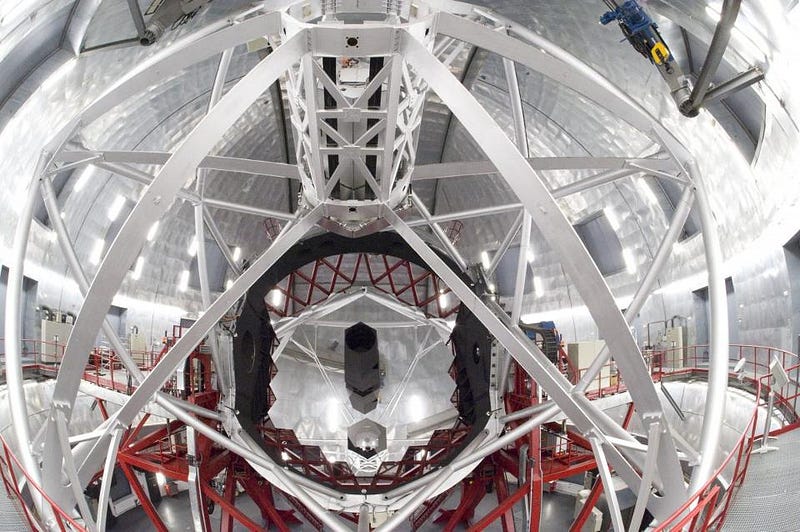
The current record-holder takes the latter approach, and is the Gran Telescopio Canarias in Spain, made of 36 hexagonal segments that total a diameter of 10.4 meters. As of 2015, it’s the world’s largest optical telescope, but it won’t remain that way for long. In the Chilean Andes, another project that’s been in the works since 2003 is poised to break every optical telescope records: the Giant Magellan Telescope (GMT). By fusing both approaches — building seven of the largest, single-cast optical mirrors we can manufacture on Earth and stitching them together on a single, giant mount — it’s prepared to come in at a whopping 25 meters in diameter.
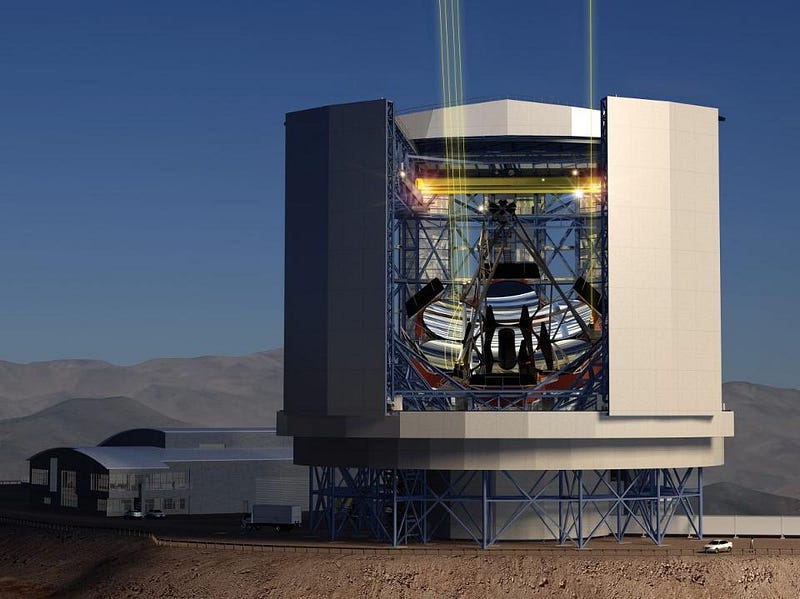
The GMT will be the largest optical telescope ever designed and built, and construction has not only already begun, it’s expected to see first light in 2023 and to reach completion in 2025. It will gather more than 100 times the light of the space-based Hubble, and more than five times as much as any currently existing ground-based telescopes. While many plans for the next generation of ground-based telescopes existed, the three other famous ones — the Thirty Meter Telescope (TMT), the European Extremely Large Telescope (EELT) and Overwhelmingly Large Telescope (OWL) — have either suffered major setbacks or been cancelled entirely. But not only is GMT coming in on schedule, it’s already overcome its biggest scientific challenges.
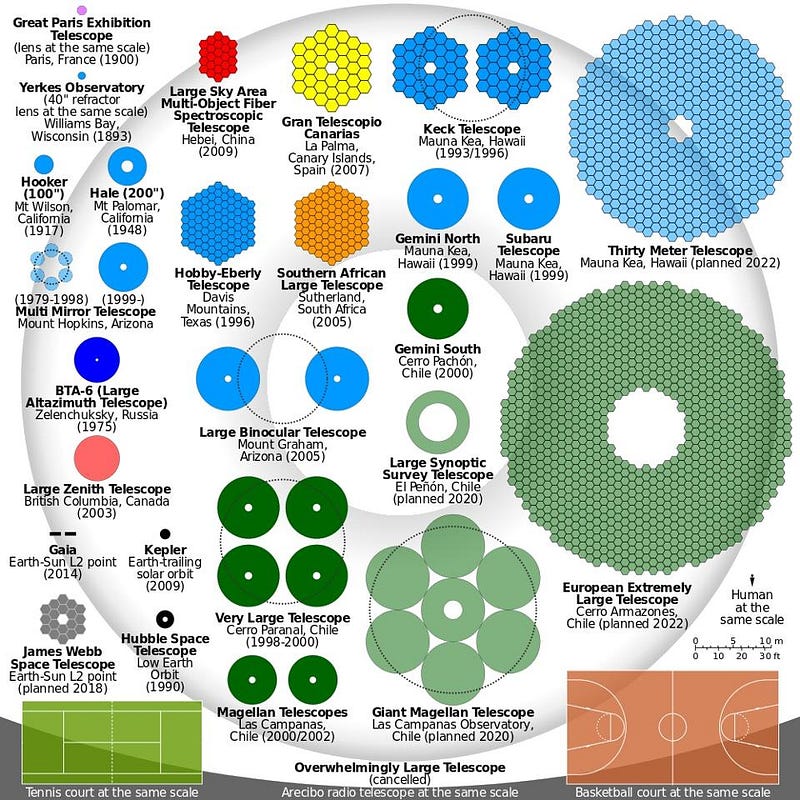
The first big challenge was the mirrors themselves. Go larger than about 8 meters, and the mirrors themselves will deform at those necessary weights. Add a large number of segments, and you start producing large numbers of image artifacts: wherever sharp lines meet, you have a difficult-to-remove bit of noise added to each image. By designing their telescope to have just 7 large, nearly-spherical mirrors on a single mount, GMT avoided most of these problems. However, it introduced a new challenge: the first manufacture of an off-axis, asymmetrical section of an ellipsoid that needed to be differentially polished. The central mirror (of the 7) can be a nice, symmetric shape, but each of the six off-axis ones required a revolution in mirror technology. But the University of Arizona’s mirror lab has succeeded at this task, polishing their mirror to better than 20 nanometers in smoothness.
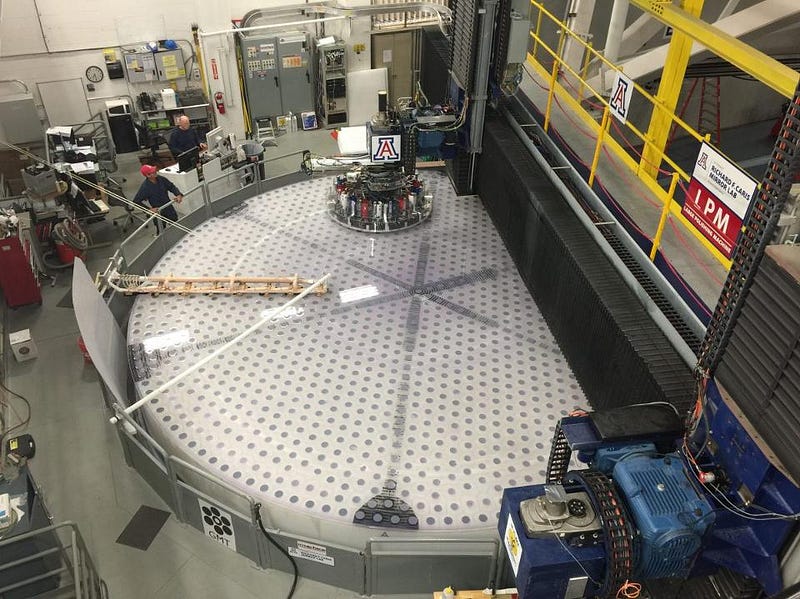
There will be a technical challenge in stitching together mirrors this large, both in terms of focal length (less than a millimeter of accuracy over all 25 meters) and in terms of alignment. Fortunately, once you calibrate and align the mirrors once, using interferometry, it’s good to go for the rest of your observing run. This was demonstrated as a proof-of-concept by the Large Binocular Telescope, which used this technique to observe one of Jupiter’s moons, Europa, occulting another one, Io. You can even watch the volcanoes on Io — visible in the infrared — erupting in the process!
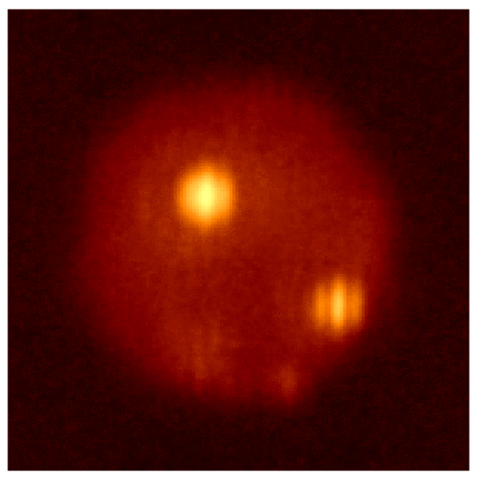
One remarkable facet of this telescope will be the adaptive optics. The Earth’s atmosphere tends to get in the way of viewing any space-based targets from the ground, which is why you build your observatories at high altitudes where the air is still. But even with that, there’s still deformation. While having a guide star is helpful, the key to adaptive optics is to have a secondary mirror that deforms in real-time to turn that distorted light back into the known configuration it must be in. So far, we’ve only ever successfully done that for a single mirror.
GMT is so large that we’d actually get substantial differences from how the atmosphere affects the light impinging on the mirrors on opposite sides of the telescope. But adaptive optics systems have been used with tremendous success for 8 meter telescopes previously, so what they’re doing is nothing short of genius: building seven separate adaptive optics systems and synchronizing them all together!
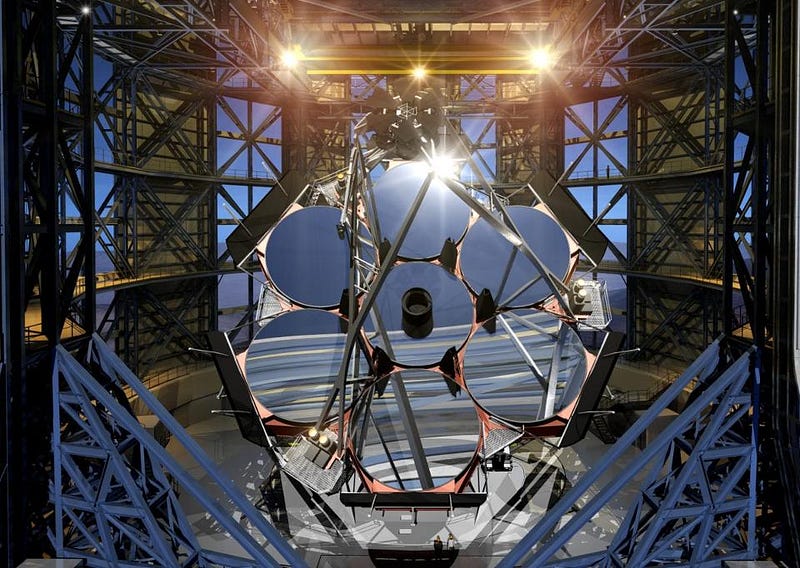
You wind up with a single, clean image that’s atmospherically corrected, that doesn’t have the image artifacts of other segmented mirrors, and that can get resolutions of between 6–10 milli-arc-seconds, depending on what wavelength you look at. Remember, an arc second is 1/3600th of a degree, and the full Moon is about half a degree wide on a side. This is 10 times the resolution of Hubble, and it will see first light just six years from now. The science we’re going to learn is incredible.
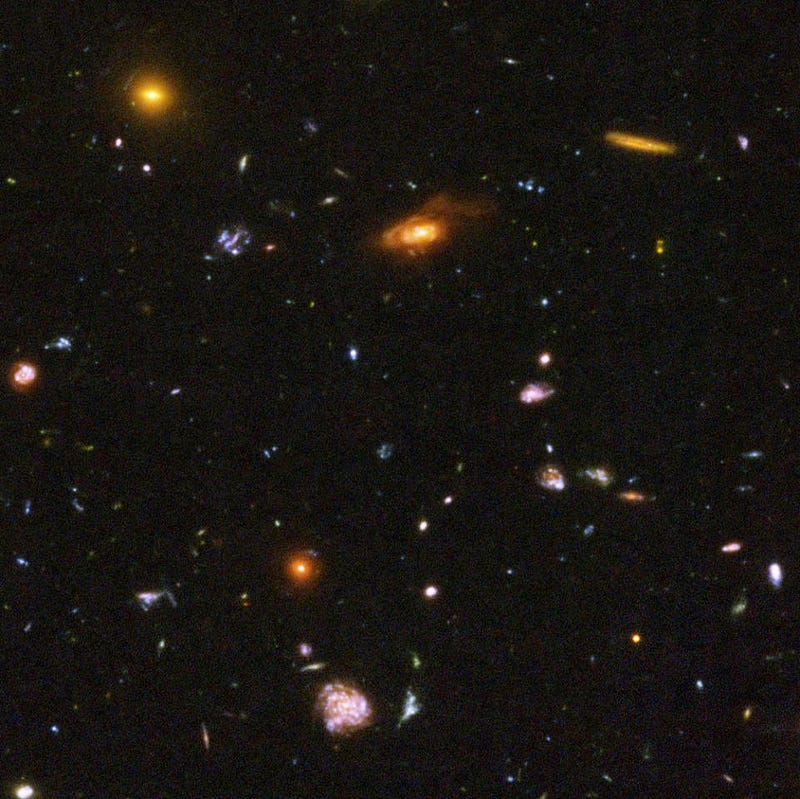
Distant galaxies will be imaged out to ten billion light years. We’ll be able to measure their rotation curves, look for signatures of mergers, measure galactic outflows, look for star formation regions and ionization signatures.
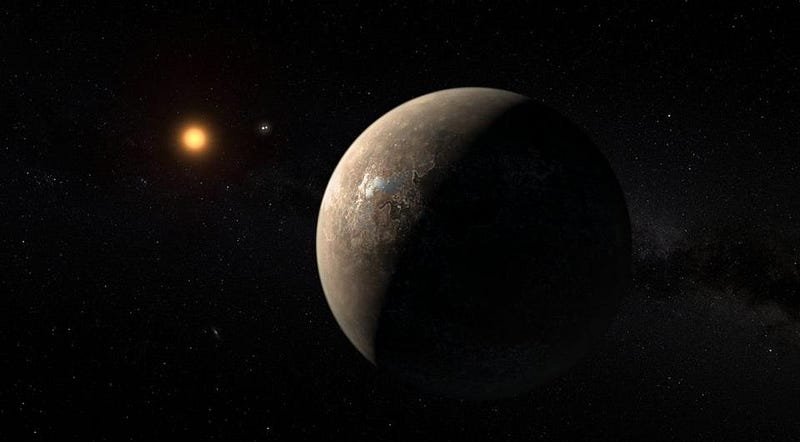
We’ll be able to directly image Earth-like exoplanets, including Proxima b, out to somewhere between 15–30 light years distant. Jupiter-like planets will be visible out to more like 300 light years.
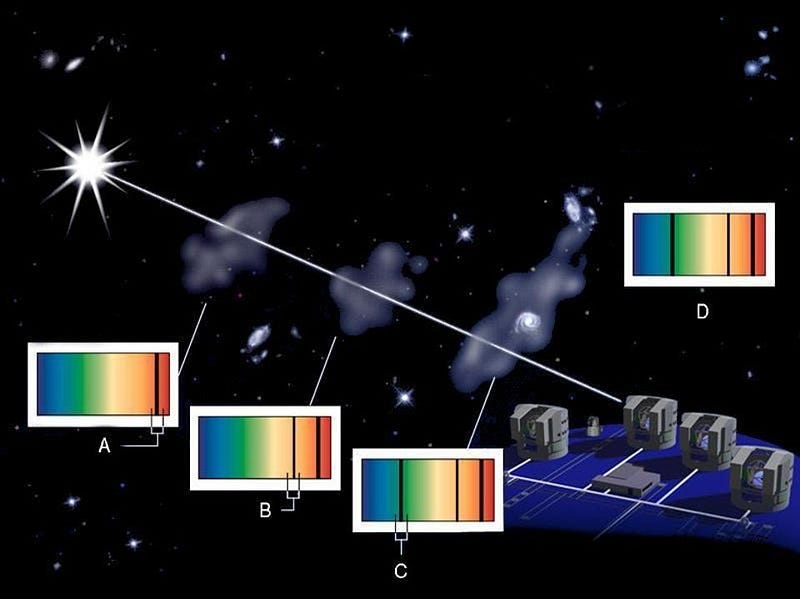
We’ll be able to directly image the closest spatial objects at highest resolutions. This includes individual stars in crowded clusters and environments, the substructure of nearby galaxies, as well as close-in binary, trinary and multi-star systems. This largest-ever telescope will be equipped with a state-of-the-art spectrograph, and will do wider-field imaging than Hubble or even James Webb will be capable of. In addition to luminous objects, we’ll be able to measure molecular clouds, interstellar matter, intergalactic plasma, as well as the most pristine, metal-poor stars in the galaxy. And as far as speed goes, it will be tremendous: all the light that Hubble can gather, GMT can gather, only 100 times faster.
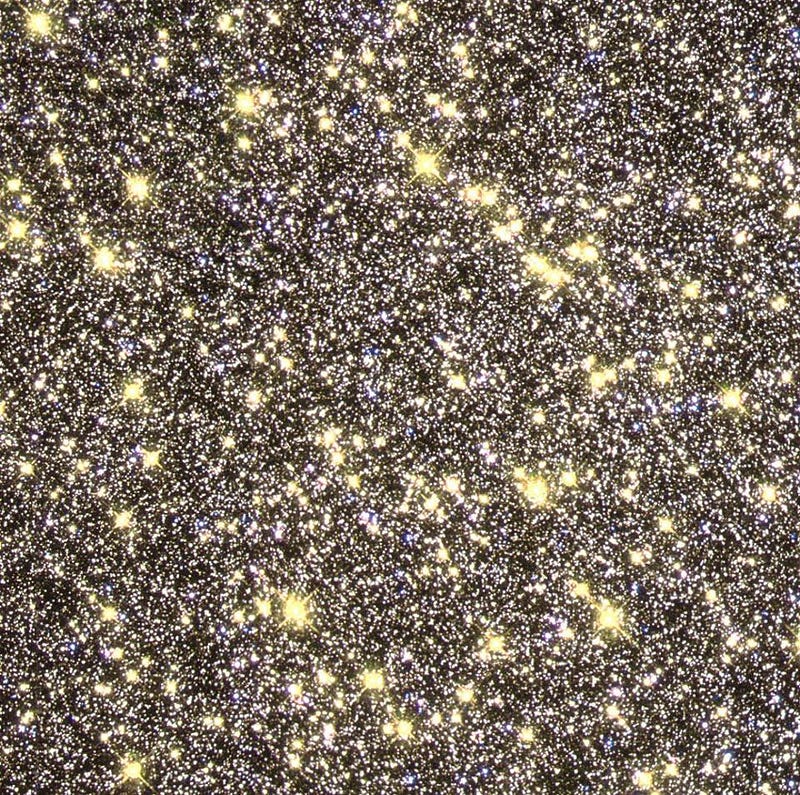
But that’s only what we know we’re going to see. Perhaps most exciting will be the advances that we don’t know are coming. No one could’ve predicted that Edwin Hubble would discover the expanding Universe when the 100-inch Hooker telescope was first commissioned; no one could’ve predicted how the Hubble Deep Field would open up the Universe when that image was first taken; no one could’ve predicted that measuring distant supernovae would lead to the discovery of dark energy. What will GMT find when it starts viewing the Universe? The future of any scientific endeavor — and perhaps astronomy in particular — requires you to be ambitious, and to invest in looking for the unknown. Thanks to the Giant Magellan Telescope, we’re on track to see the Universe in ways and in locations where no one has gone before.
Thanks to Pat McCarthy, Buell Jannuzi, Amanda Kocz and Sarah Lewis for their generosity with information and materials respecting scientific and technical progress on GMT.
This post first appeared at Forbes, and is brought to you ad-free by our Patreon supporters. Comment on our forum, & buy our first book: Beyond The Galaxy!





